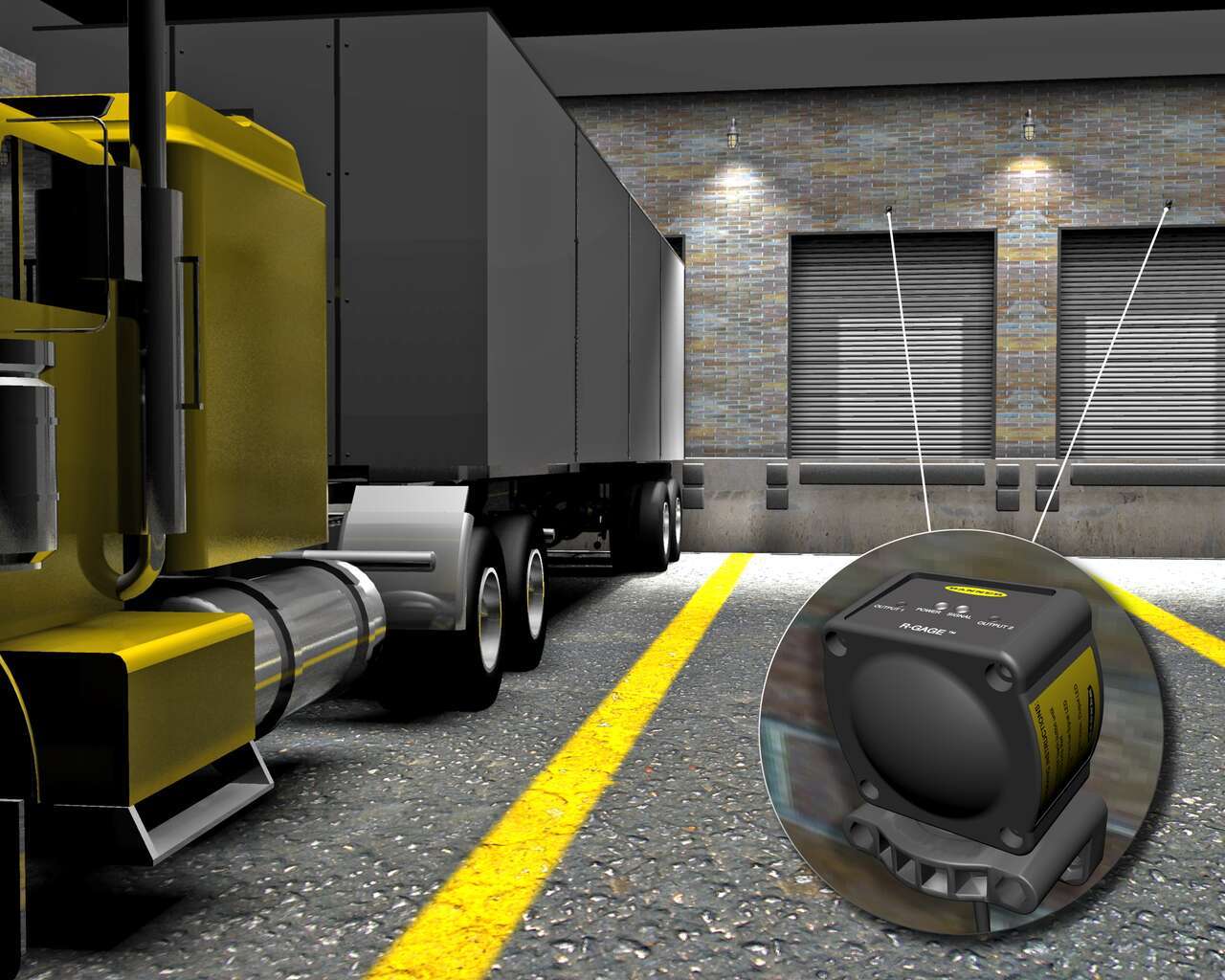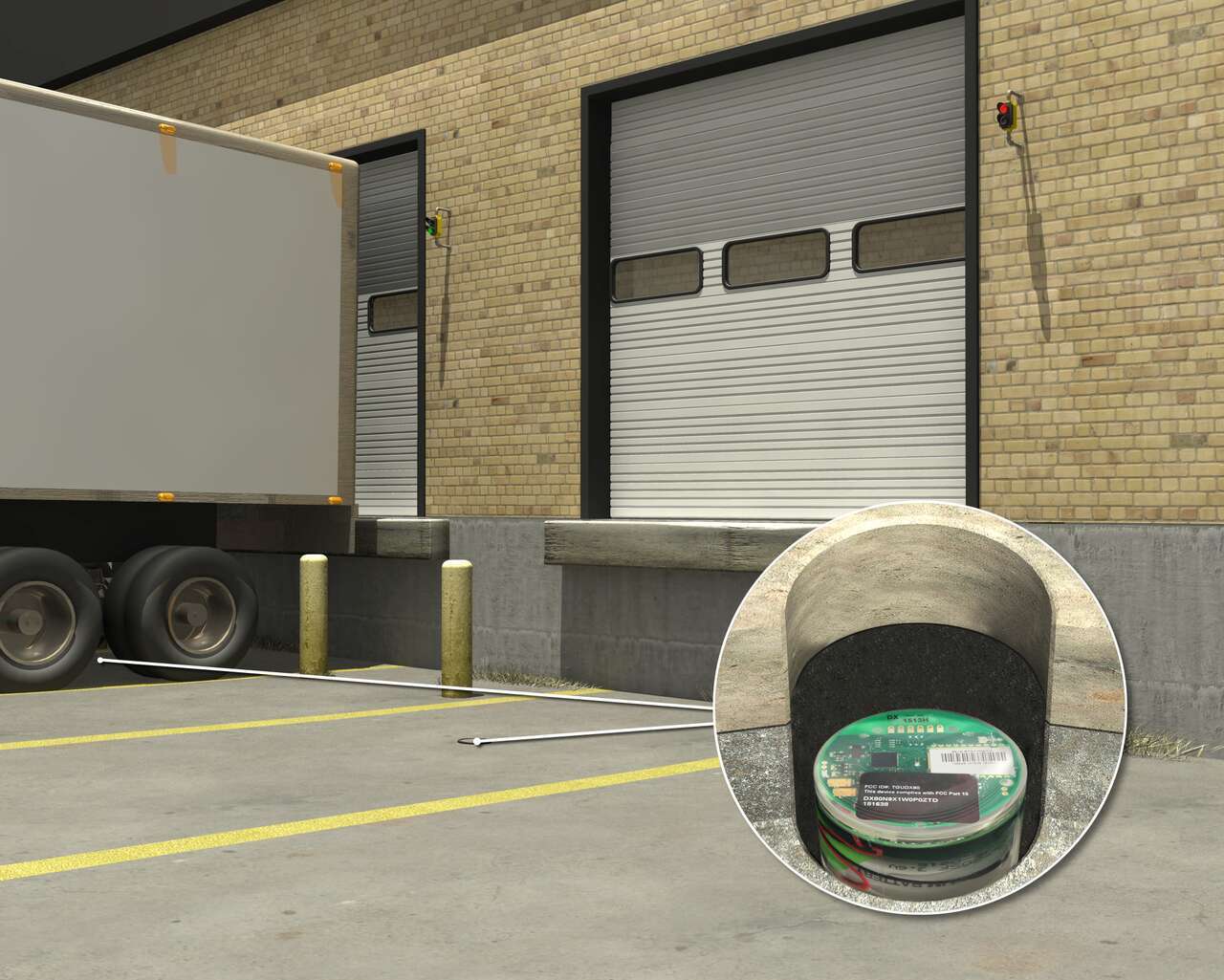Vehicle Detection at Loading Docks
Improve Productivity and Efficiency
Vehicle detection at a loading dock can be used to quickly identify available bays, facilitate fast load and unload times by alerting staff when trucks are present, verifying vehicles are in the correct position before opening doors, and more.
These capabilities help imrpove productivity and efficiency at manufacturing facilities and warehouses.
Detecting vehicles at a loading dock can be difficult because of unpredictable weather and environmental changes. Sensors installed here are exposed to the elements and need to be able to withstand fluctuations in weather and ambient light.
In addition, truck surfaces are made of a variety of materials and come in a range of colors and sizes, which can be challenging for traditional sensors to detect reliably. A solution is needed that consistently detects trucks regardless of the color, reflectivity, or size of the vehicle.
There are a variety of technologies that can be used to solve these applications, including radar sensors, ultrasonic sensors, and fully wireless solutions. In addition, pairing a vehicle sensing technology with bright indicator lights helps staff quickly react when trucks arrive.
Application: A reliable solution is needed to detect presence the of large trucks at a loading dock even in harsh conditions and verify that trucks are in the correct position before the door is opened. to ensure the safety and security of the facility.
Solution: A radar sensor, like the QT50R high sensitivity radar sensor, uses Frequency Modulated Continuous Wave (FMCW) radar to ensure reliable detection of moving or stationary targets regardless of environmental conditions. Radar is an ideal solution for detecting large targets like semi trucks in outdoor environments.
Benefits: Radar technology is unaffected by weather conditions such as wind, rain, ambient light, etc. A radar sensor with a rugged housing built for outdoor use, reducing the need for frequent maintenance or replacement.
Application: A loading dock at a manufacturing facility needs to detect shipping trucks to improve dock efficiency. The commotion of a manufacturing plant can make it difficult to quickly capture the attention of staff when a vehicle arrives.
Solution: A wireless ultrasonic sensor uses sound waves to detect when trucks arrive at the warehouse loading dock. A high-visibility tower light, like the TL70 tower light with audible alarm, both visually and audibly alerts staff that the vehicle has arrived and is ready to be loaded or unloaded.
Benefits: Pairing wireless sensors and indicators together makes it easy to quickly and clearly communicate when vehicles arrive at the dock. Rugged sensors from Banner can withstand harsh outdoor conditions.
Application: Errors and delays at the loading dock can cause problems throughout the supply chain. Identifying available bays on the loading dock and directing staff to the correct bay when a delivery has arrived can improve turnaround time and reduce errors. Performance data from the loading dock can help supervisors make more informed decisions regarding staffing, scheduling, and equipment allocation to improve efficiency and performance.
Solution: A wireless magnetometer reliably detects vehicles by detecting changes in the magnetic field. Status information can be sent wireless using a wireless controller inside the facility. The controller counts each arrival and departure at a bay, logs the time at which the event occurred, and relays any change in status to one of several network-connected tower lights.
Benefits: Data can be accessed later and can be used to track and improve turnaround performance, identify inefficiencies and process issues, and allow supervisors to make smarter decisions about their staff and equipment.
Radar Sensor
Sensores de radar de alta sensibilidade ideais para evitar colisões de equipamentos móveis, como empilhadeiras e veículos de mina.
- O radar FMCW (presença verdadeira) de quarta geração detecta objetos móveis e fixos
- Maior sensibilidade e alcance
- Campo de detecção ajustável — ignora objetos além do ponto de ajuste
- Fácil setup e configuração de alcance, sensibilidade e saída com chaves DIP
- As funções de detecção não são afetadas por vento, chuva, neve, neblina, umidade, temperatura do ar ou luz
- O sensor opera em banda de telecomunicação Industrial, Científica e Médica sem necessidade de licença especial
- O corpo reforçado IP67 suporta ambientes severos
Wireless Magnetometer
The M-GAGE sensor uses passive sensing technology to detect large ferrous objects, such as motor vehicles. The M-GAGE provides an alternative replacement for inductive loop systems and needs no external control box.
- Projetado para minimizar os efeitos das alterações de temperatura e campos magnéticos flutuantes
- O sensor aprende sobre o ambiente de fundo e armazena as configurações em uma memória não volátil
- A tecnologia FlexPower é impulsionada por uma bateria principal de lítio integrada ao corpo
- Os transceptores fornecem comunicação bidirecional entre o Gateway e o Node, incluindo transmissão de dados totalmente reconhecida
- Corpo totalmente encapsulado e vedado com fonte de energia, sensor e antena para solução totalmente sem fio.
Wireless Ultrasonic Node
The wireless ultrasonic sensor node is ideal for indoor parking applications.
- Can be mounted directly on the ceiling of a parking garage to identify the presence of a car in the parking space below.
- O sensor ultrassônico detecta objetos até quatro metros de distância
- Integrated D-cell battery reduces the cost of installation by eliminating the need to run wires and conduit.
- Projetado com compensação de temperatura por meio de medição integrada
- Os transceptores fornecem comunicação bidirecional entre o Gateway e o Node, incluindo transmissão de dados totalmente reconhecida
- O dispositivo contém bateria, sensor e antena para oferecer uma solução sem fio robusta – IP67, NEMA 6














